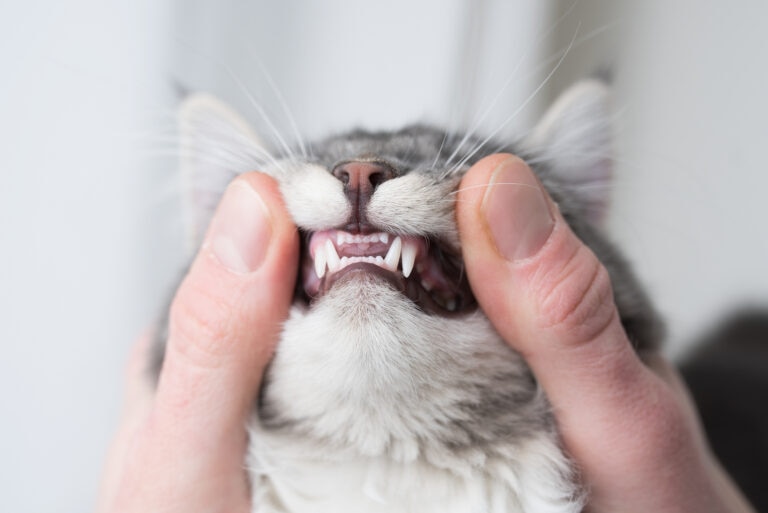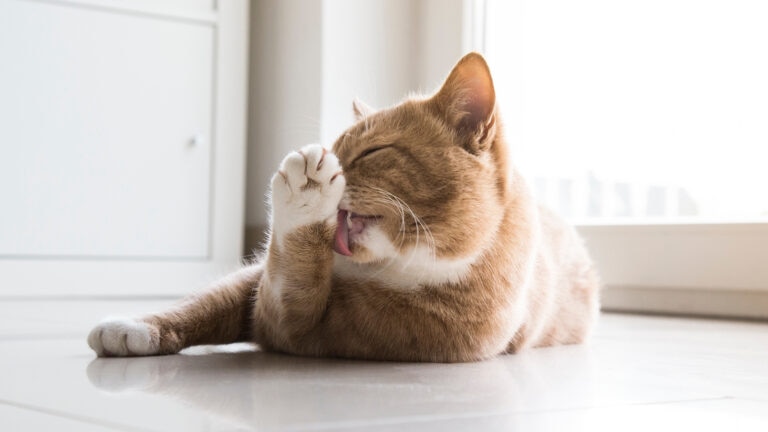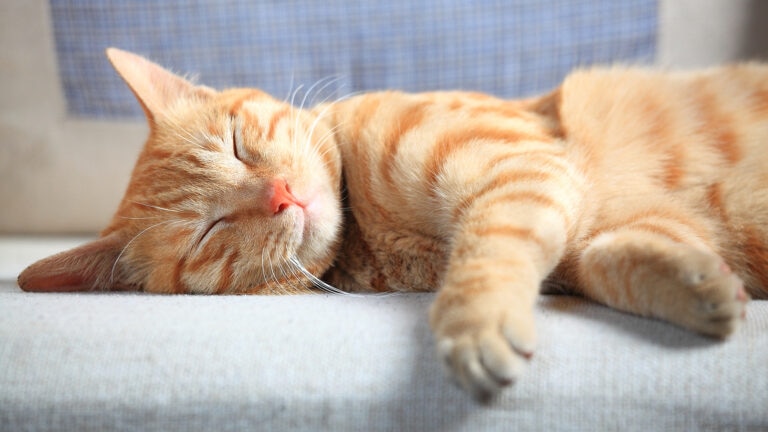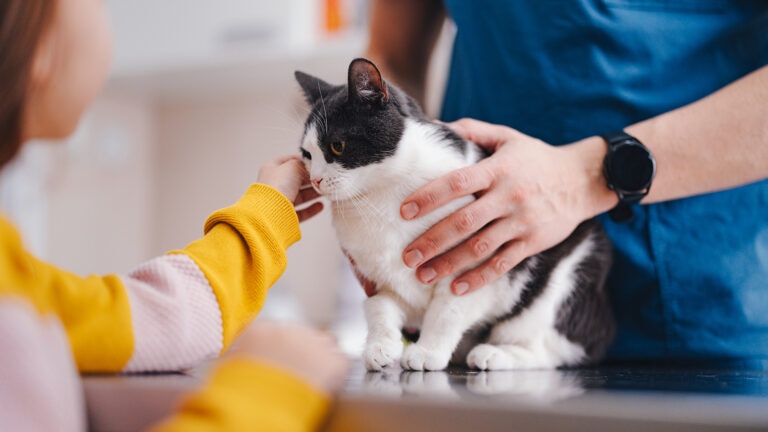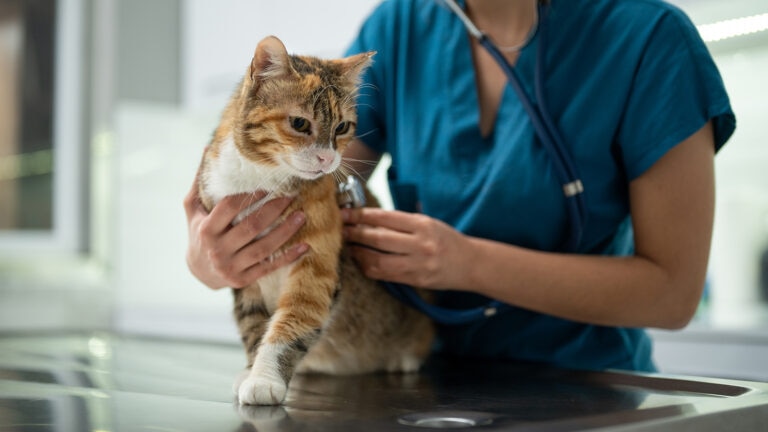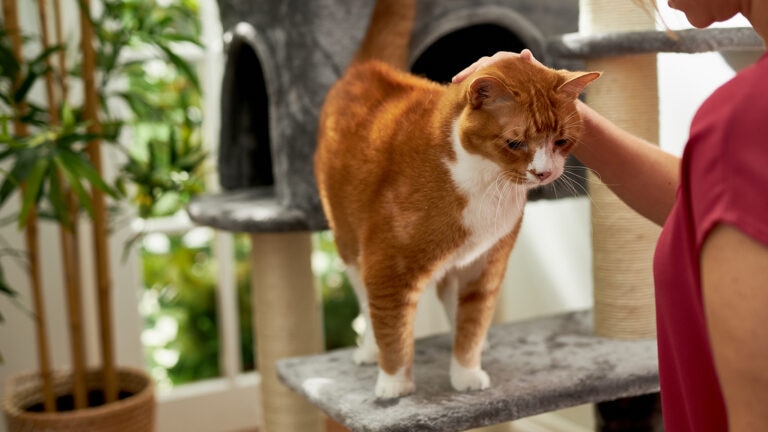How To Tell if Your Cat Is in Pain
Cats are masters at hiding their pain, a survival instinct that prevents them from seeming vulnerable and becoming prey in the wild. Even if your cat never steps a paw outdoors, they have an innate drive to conceal discomfort. That means learning how to tell if a cat is in pain by looking for subtle behavior changes, facial expressions, or body language cues.
Ahead, we’re covering the most common signs of pain in cats—including some that may surprise you—and offering advice on when to go to the vet.
9 Signs of Pain in Cats
So, how do you know if your cat is in pain? It often requires careful observation. Different types of pain will present in different ways, explains Bruce Kornreich, DVM, PhD, DACVIM, director of Cornell Feline Health Center in Ithaca, New York.
For example, arthritic pain may show up as not being able to take the stairs or get into the litter box, while dental pain may result in not being able to eat hard kibble. It’s all about assessing the entire picture and comparing your cat’s typical behaviors to new ones.
1. Change in Appetite
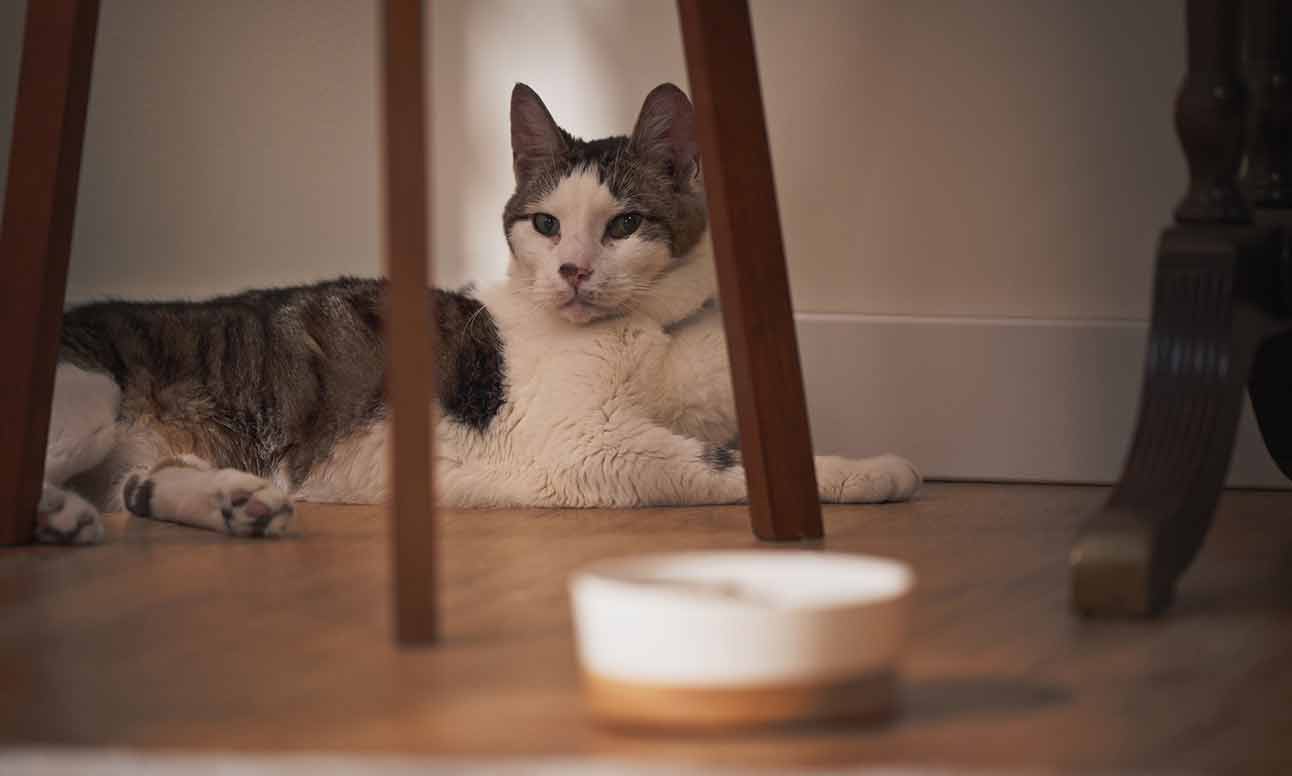
Photo by Chewy
A cat who’s not eating or drinking may be experiencing some level of discomfort or pain. Food is a necessity, so there’s almost always an underlying reason why they’re choosing not to eat.
The problem can range from something minor, like nausea or dental pain, to more serious conditions such as kidney disease, gastrointestinal issues, or infections. Even stress or environmental changes can lead to appetite loss.
If your cat refuses food for more than 24 hours, it’s important to consult a veterinarian to identify and address the underlying cause, says Dr. Kornreich.
He explains that cats can experience a condition called hepatic lipidosis when they stop eating for three to four days. The body starts to use fat stores for energy instead, but this clogs up the liver, which can quickly result in life-threatening liver dysfunction.
2. Vocalizing
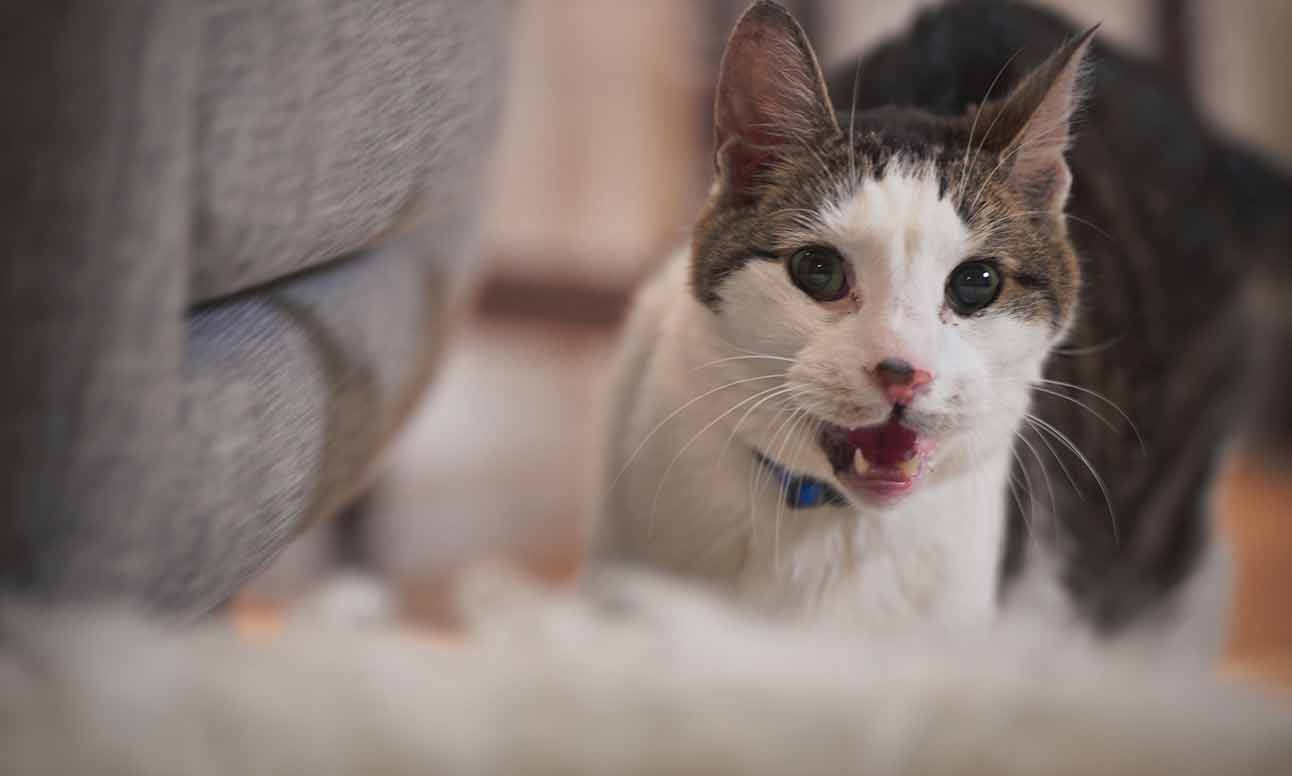
Photo by Chewy
Some cats who are in pain will cry or vocalize more often than normal, says Carly Fox, DVM, senior veterinarian at The Schwarzman Animal Medical Center (AMC) in New York City. “A change in the character of their vocalization, frequency, or volume may be an indication of pain,” she says.
Do Cats Purr When They Are in Pain?
“We often associate purring with contentment, and that’s often true,” Dr. Kornreich says. “In some cases, however, cats that are experiencing discomfort may purr. It’s an unusual finding that’s not as common, but we do see this in the clinical setting.”
3. Change in Grooming Habits
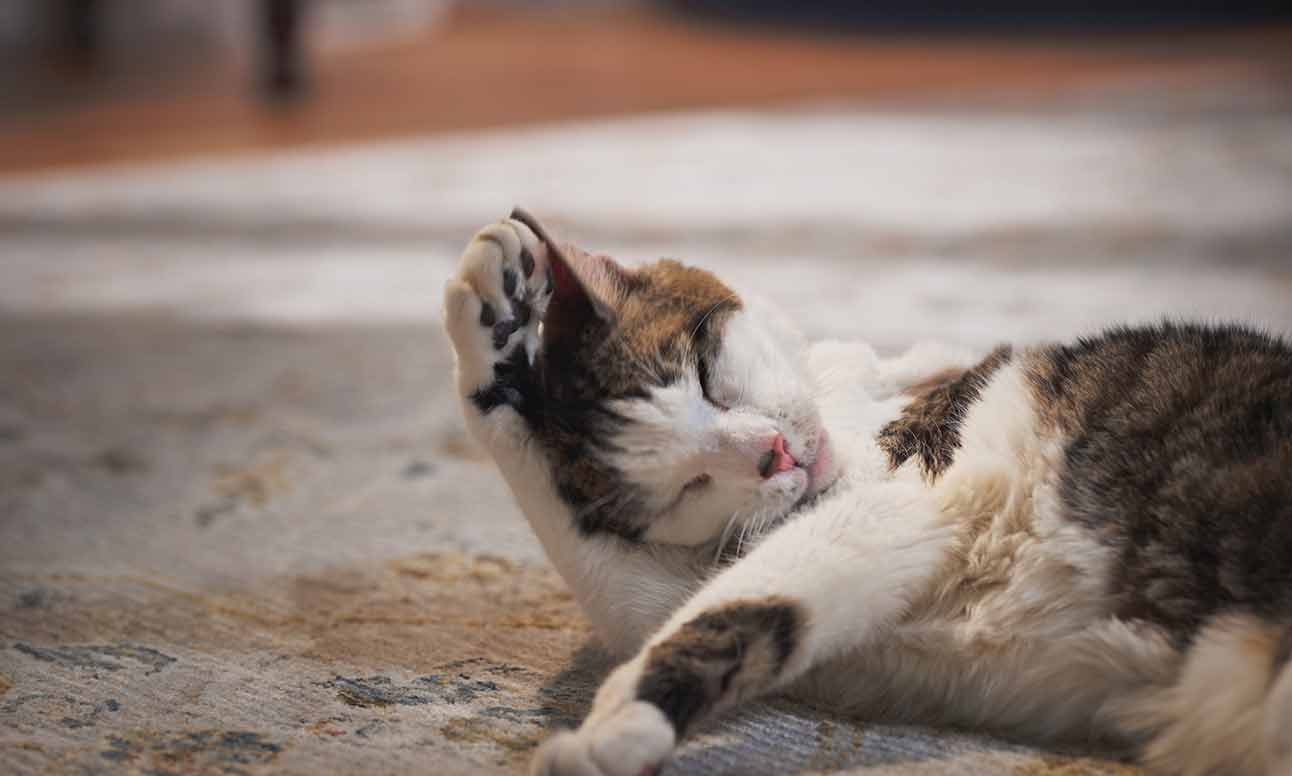
Photo by Chewy
If you notice a change in your cat’s grooming habits, this could be a sign they’re in pain.
“Some cats will overgroom a specific area—licking or chewing excessively due to pain— while others may neglect grooming altogether, leading to a dull or unkempt coat,” explains Sarah Cortright, DVM, veterinarian and chief medical director for the Underdog Community Project in Greater Los Angeles, California.
4. Facial Expressions (Feline Grimace Scale)
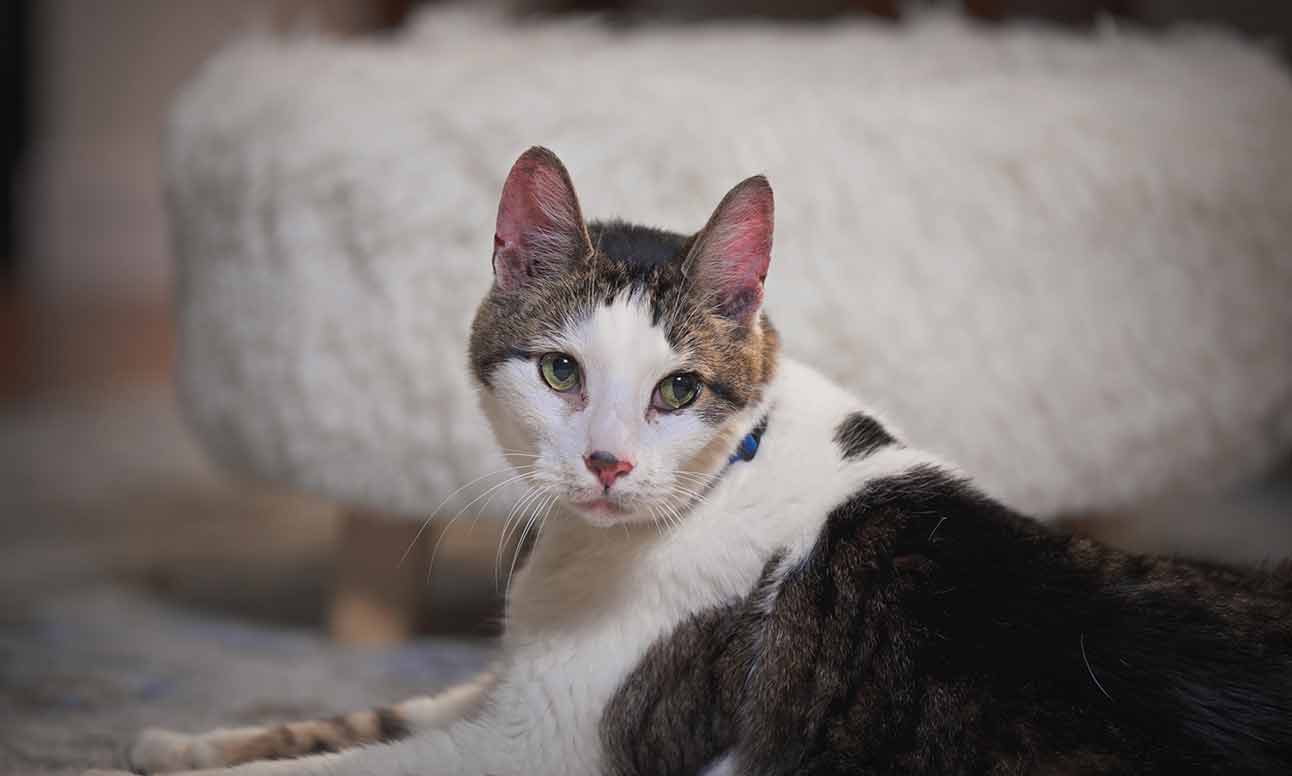
Photo by Chewy
Cats may make certain facial expressions that indicate they’re in pain, Dr. Kornreich says. In fact, veterinarians rely on what’s called the feline grimace scale (FGS), which helps them determine whether a cat is in pain or discomfort.
Developed by researchers at the University of Montreal, the FGS measures key facial features, including:
- Ear position: Normally, a cat’s ears are upright and forward-facing. Ears that are flattened, turned outward, or pulled back may indicate discomfort.
- Eye shape: Relaxed cats have open or gently squinted eyes. Partially closed, squinted, or tightly shut eyes can be a sign of pain.
- Muzzle tension: A pain-free cat’s muzzle appears relaxed. A tense or “pinched” muzzle, where the nose and mouth look drawn in, may suggest distress.
- Whisker position: Whiskers naturally fan outward or rest neutrally. When a cat is in pain, whiskers may be pulled back against the face, or appear stiff and forward.
- Head position: A comfortable cat holds their head upright and alert. A cat in pain may lower their head or tuck their chin toward the body.
5. Avoiding the Litter Box
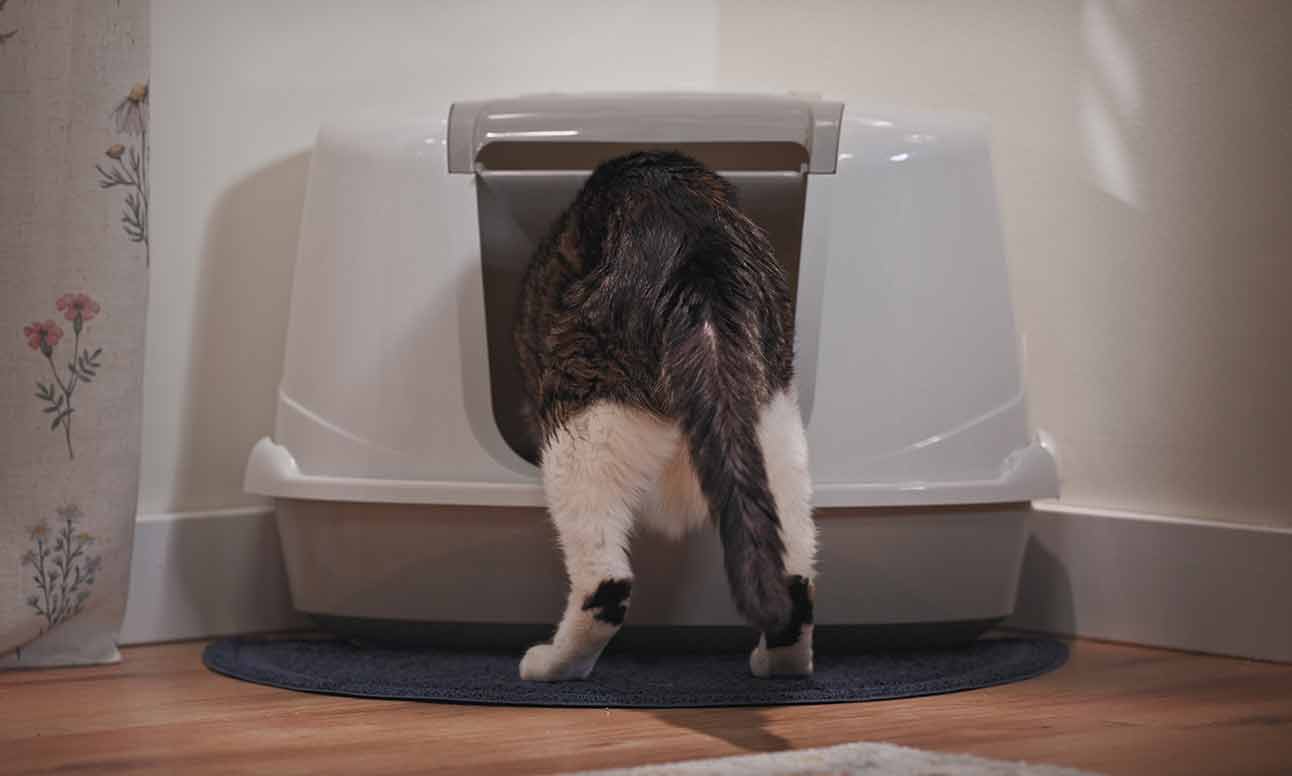
Photo by Chewy
A change in litter box behavior can signal something is wrong with your cat.
“This might be as simple as a reaction to a change in their environment—like you’ve changed their litter or put their box in a new location or took the cover off their box—or could be an indication of underlying urinary tract disease or metabolic disease,” Dr. Fox says.
It could also be a muscular or skeletal issue causing pain—like a sprain or arthritis—particularly if the litter box is large or in an area that’s difficult for them to access.
6. Reduced Activity

Photo by Chewy
A sudden decrease in activity, especially in a normally playful cat, can be a red flag, says Dr. Cortright.
While sleeping or resting becomes more common with age, a sudden change in your cat’s ritual may indicate something’s off. If they’re avoiding favorite activities like climbing, jumping, or playing, it could be a sign of pain or discomfort that warrants a closer look.
If your cat is limping, seems stiff, or is not as willing to jump on higher surfaces, this can be an indication of pain too. “Most cats—over 90% over the age of 12—will develop arthritis in their senior years,” Dr. Fox says.
7. Suddenly Becoming Aggressive
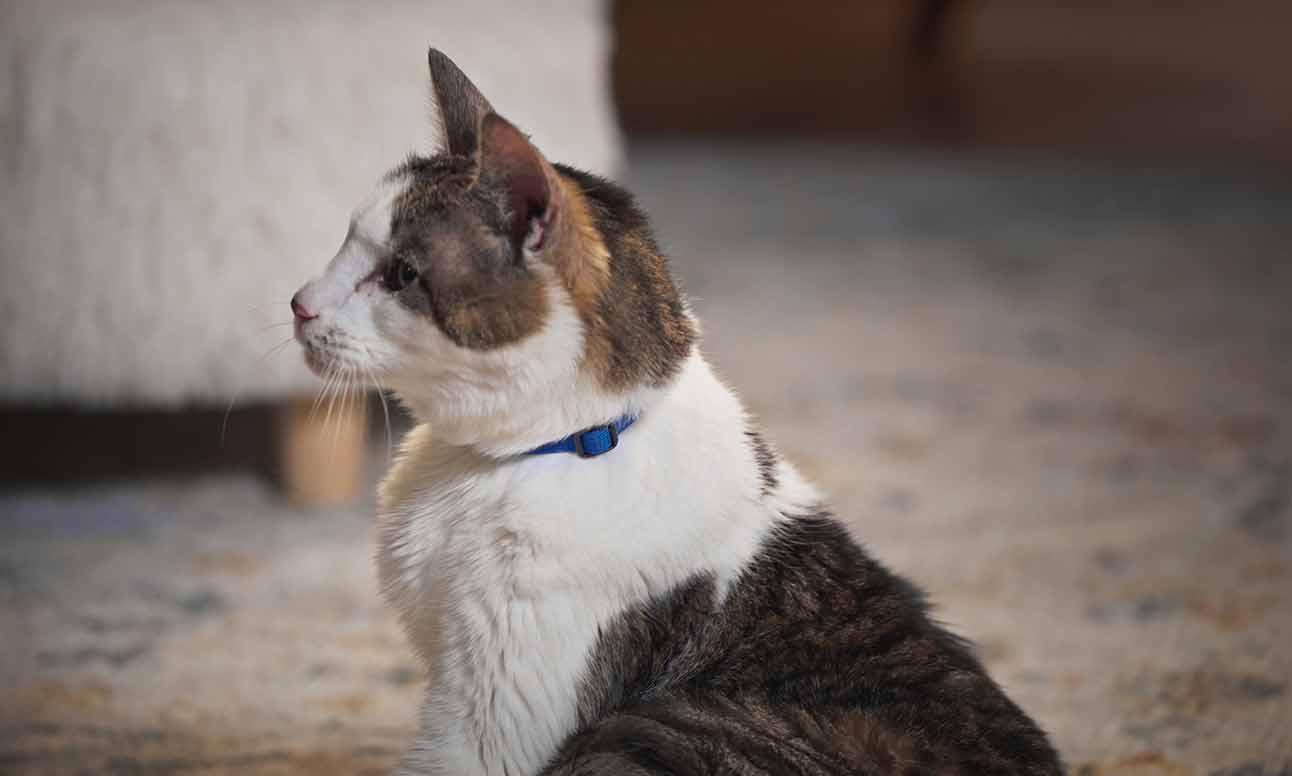
Photo by Chewy
Increased aggression is another cue that your cat doesn’t feel great. It’s not that they don’t love you, but that they’re feeling ill and want to protect themselves.
“If your cat hisses, swats, or tries to bite—and this isn’t typical behavior—this could absolutely be a sign they are uncomfortable,” Dr. Fox says.
Some cats may more subtly avoid you by walking away, or trying to avoid being petted or touched.
8. Hiding
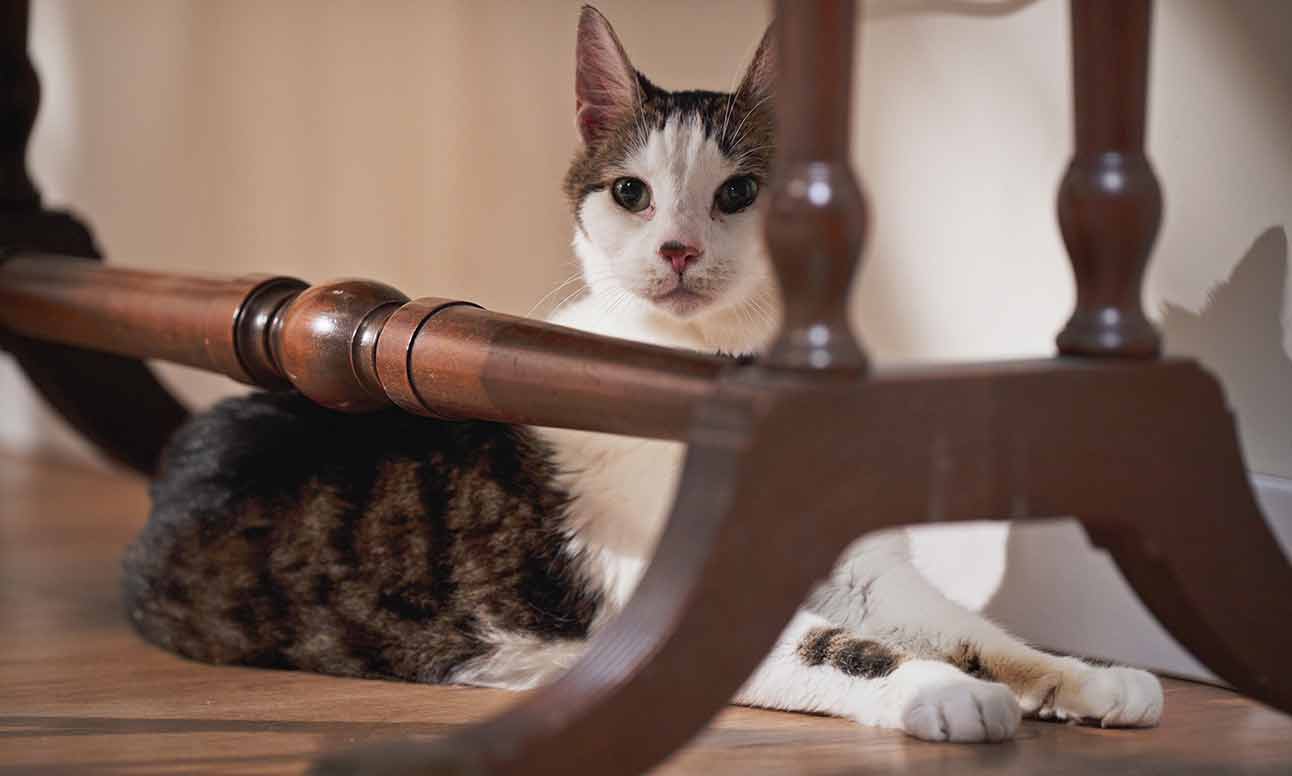
Photo by Chewy
Speaking of walking away, cats who are in pain or not feeling well often hide or retreat into a place where they feel safe, Dr. Fox says: “This goes back to their survival instincts, where they seclude themselves in times of weakness to avoid predators.”
9. Body Language Cues
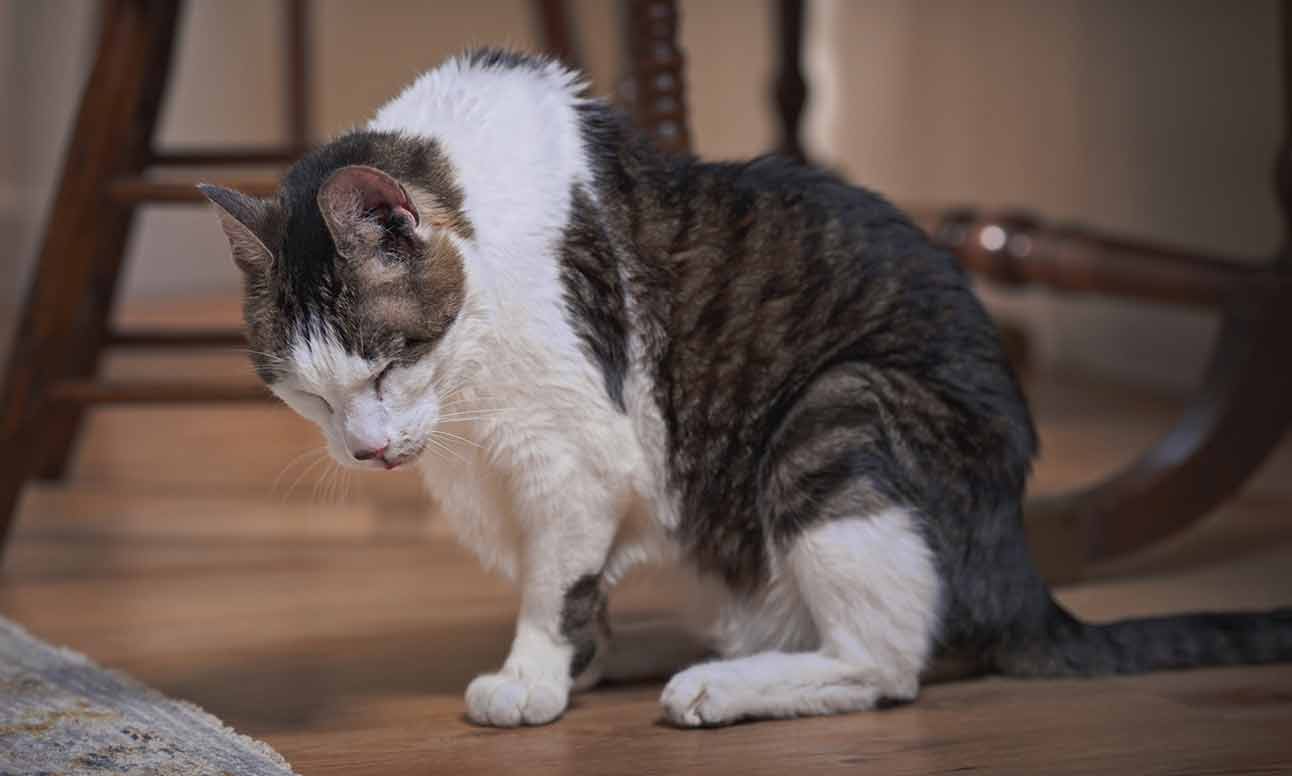
Photo by Chewy
Subtle body language changes can reveal discomfort. A cat in pain may crouch with a tense body, tuck their limbs tightly, or avoid movement altogether. They might also become restless, frequently shifting positions in an attempt to get comfortable. Further, a hunched posture, reluctance to jump, or sudden stiffness could indicate joint or muscle pain.
What To Do if You Think Your Cat Is in Pain
If your cat has any of the above signs of pain, it’s important to schedule a visit with your veterinarian right away.
“Even if the discomfort appears to be gradual, a vet visit is still necessary to determine the underlying cause and provide pain relief,” Dr. Cortright explains. “Early intervention can improve their quality of life and prevent further complications.”
At your appointment, the vet will take your pet’s full history into consideration and perform a physical examination to assess their health. They may also recommend certain diagnostic tests, prioritizing minimally invasive options first, says Dr. Kornreich. All of the above may lead to a diagnosis and the appropriate treatment to manage their pain.
Take pictures or videos of any cat behavior that seems strange to you. “Many cats hide their symptoms at the vet’s office due to stress,” Dr. Cortright says, “so having visual documentation can help your veterinarian make a more accurate assessment.”
The bottom line: If you ever have concerns, don’t hesitate to reach out to your vet. Early detection and treatment are key to keeping your feline friend happy and healthy.
Attributions
This content was medically reviewed by Kelly Gold, DVM, Chewy veterinarian.




